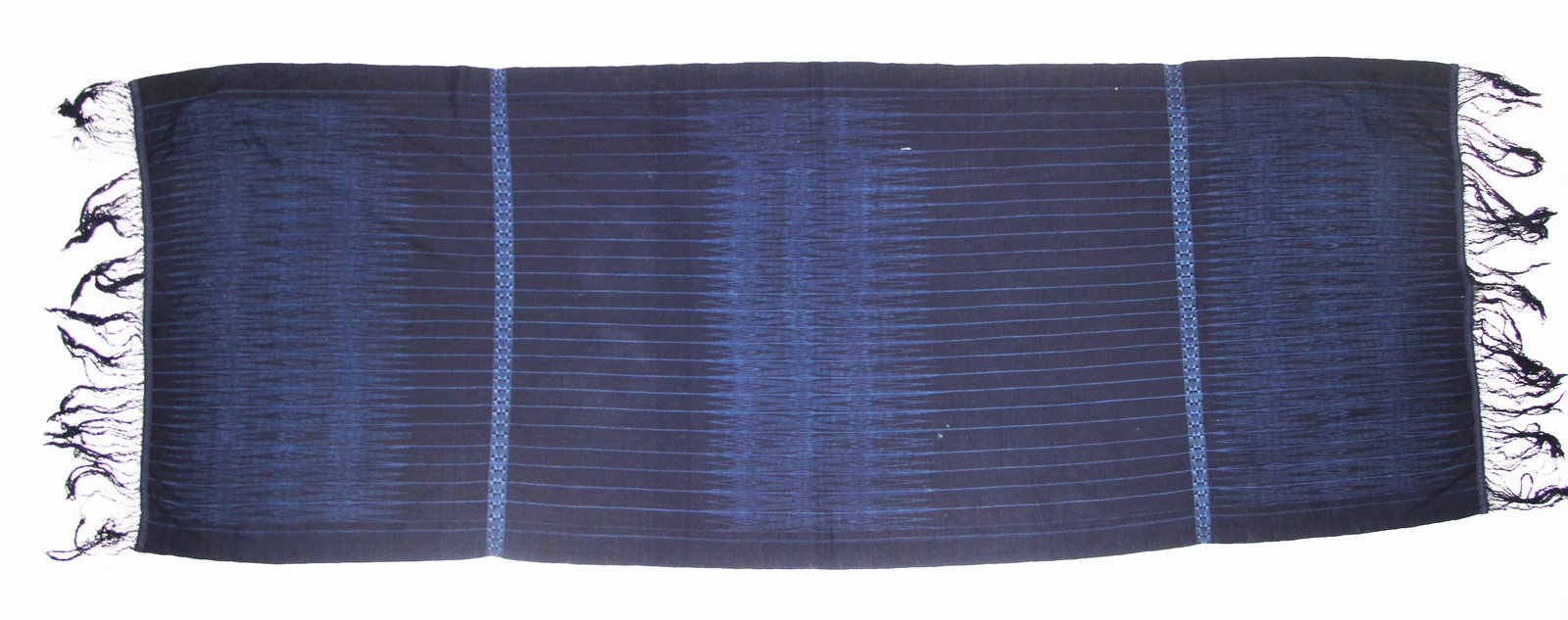Social fabrics of the Batak people
On this page...
In Batak culture, textiles are not merely accessories but the essential elements of ceremonial life and are prominent in the exchange of gifts and life-cycle rituals. A small sample of Batak textiles in the Australian Museum collection illustrates some aspects of their use and meaning. Cloths were, and still are, presented as gifts on various important occasions, following strict rules that are fixed in the kinship structure.

© Australian Museum
The ulos ragi hotang E85843 from the Balige district to the south of Lake Toba was one of the most important ritual textiles, customarily presented by the bride’s family to the groom or father of the groom in the Toba communities (Niessen 2009: 145, 267-71). The ragi hotang or rattan design – the stippled ikat - is said to be symbol of longevity (Gittinger 1975: 19). A woman received the ulos ni tondi (soul cloth) from her parents during her first pregnancy to protect the woman and her family and bring her long life and fertility (Niessen 2009: 100). The indigo-dyed surisuri E85836 and ulos sibolang E85844 normally used as shoulder-cloths, are examples of textiles that may have been gifted for this purpose (Niessen 2009: 178-9; 201). Both cloths are decorated with warp ikat, an ancient technique in which the warp threads are dyed with patterns prior to weaving.
In the Batak tradition, weaving is typically associated with the females and cloth is ritually presented from women to men in exchange for metal goods. However, Batak textiles may also be thought of as a totality in themselves, in which (female) warps conjoin with (male) wefts and a single cloth can contain motifs representing both genders (Niessen 2009: 41). Given to a bride by her parents and worn by married women (Niessen 2009: 369), the bulang head-cloths E81147 and E85828 of the Simelungun people have a different repeated lozenge pattern in each end panel that can be distinguished as male or female. These patterns are woven in a supplementary weft using a warp substitution technique in which a second set of white warp threads was used to replace the red warp thread for a section of the cloth during the weaving process (Niessen 2009: 494-7). It is suggested that the complexity of weaving is not only to produce beautiful cloth but also to give it symbolic and ceremonial potency.

© Australian Museum
Batak weaving and clothing traditions are dynamic (Niessen, 1993) – they respond and adapt to changing circumstances. For example an ulos godang E85838 shoulder-cloth contains two weftbands that incorporate romanised Indonesian text ‘Selamat Pake’, meaning ‘blessings to the wearer’. Such inclusions of writing illustrate the effect of education and literacy (Niessen 1993: 107-10). These cloths are made by the Angkola Batak in Sipirok but may be used by the Toba Batak when receiving honours or to signify an affiliation with Islam (Niessen 2009: 394). As with a number of other Batak textiles, the borders of this cloth are finished in a weft twining technique known as sirat, a pattern that was used by both women and men, although customarily, beyond textiles, only men used writing (surat) (Niessen 2009: 522, 529).
Researched: Dr Hweifen Cheah
Explanations:
Ikat – the word, borrowed from the Indonesian language, describes the method of weaving that uses dyed threads to produce coloured patterns, as well as the type of fabric made in this process.
Warp is the set of threads running lengthwise in the loom (or vertical threads).
Weft is the set of threads that are woven across the loom (or horizontal threads).
References:
Sandra Niessen. Legacy in Cloth: Batak Textiles of Indonesia. Leiden: KITLV Press, 2009.
Sandra Niessen. Batak Cloth and Clothing: A Dynamic Indonesian Tradition. Kuala Lumpur: Oxford University Press, 1993.
Robyn Maxwell. Textiles of Southeast Asia: Tradition, Trade and Transformation. Hongkong: Periplus, 2003.
Achim Sibeth. The Batak. London: Thames and Hudson, 1991.
Gittinger, Mattiebelle. Splendid Symbols: Textiles and Tradition in Indonesia. Washington: Textile Museum 1979.

